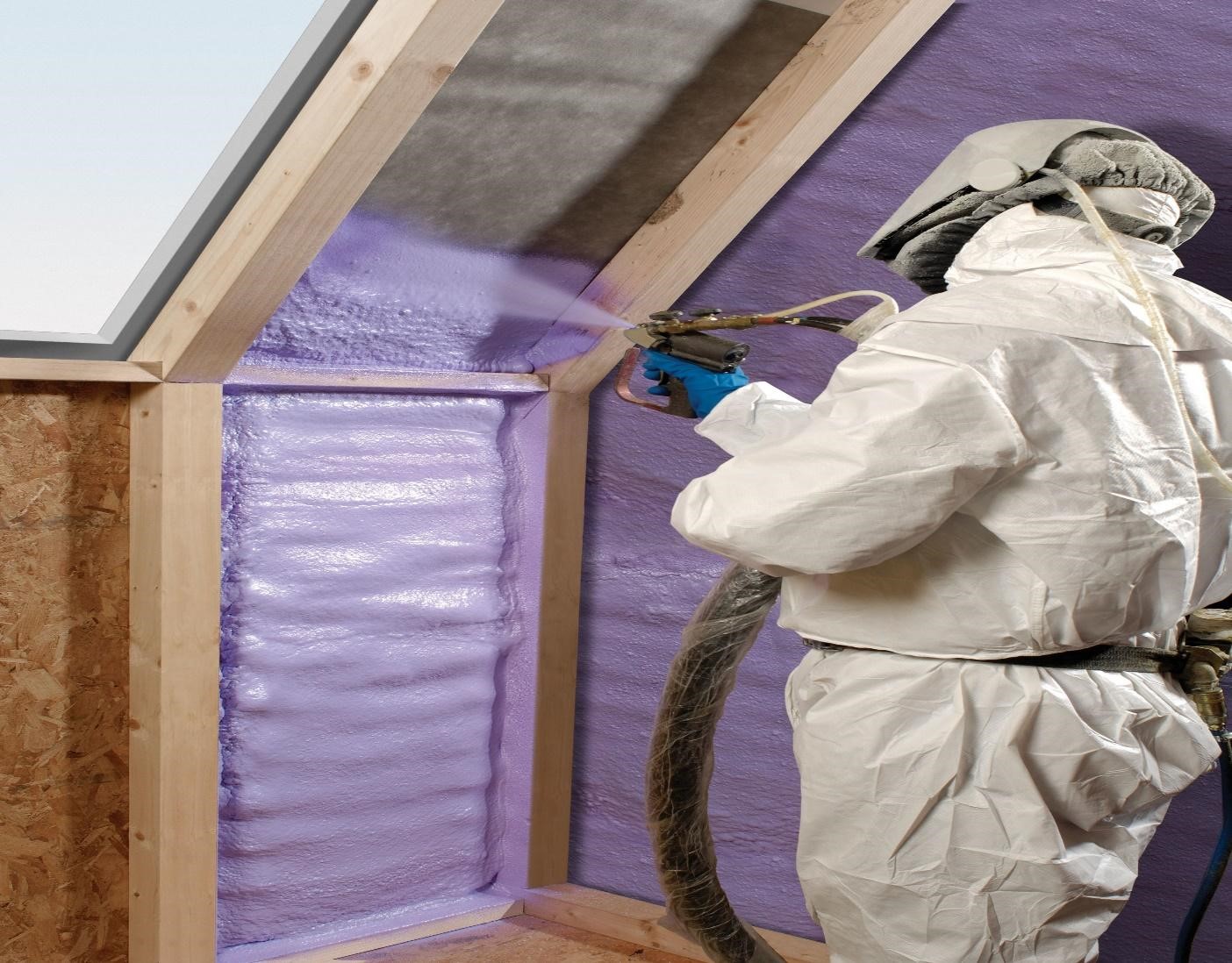
In winter, the leaves start to change colour as another season of sleet, snow, biting cold and miserable winter weather draws close. Just like every year when it grows increasingly harder to ignore the signs, we turn our minds to the best way to insulate our homes and keep warm from the elements.
Replacing your rusty old boiler with the latest innovative design in boiler technology might be a good idea. However, your energy bills might still skyrocket if you don’t take measures to prevent your home from leaking heat.
A home with a slanted roof will leak 30% of the heat generated through the wall gaps 25% through the roof and 10% through the floor. Spray foam insulation is the only way to effectively stop heat from escaping to save money on energy bills and maximize the generated heat.
9 ways you can protect your home with Spray Foam Insulation
Keeps your attic cold
Spray Foam insulation has risen quickly over the last couple of years as the top choice for most homes and business in North America. Most of the cold intrusion in your home comes from the attic and they are the major source of energy loss especially in colder climates up where they get dangerous ice dams.
Ice dams happen when snow accumulates and melts on the roof and runs down to refreeze on the edge. The ice dam becomes a danger because it could fall on your car, pets or worse, humans. The recommended way to prevent ice dams is to ensure your roof and attic stay cold by stopping the flow of heat from attic to the outside roof. Spray foam insulation will do that and much more.

“An attic that is not well insulated contributes to issues with ice dams”, says a top industry expert at Spray Foam Systems, a major provider of Spray foam insulation and other related products. “for a permanent solution to this issue, install spray foam in the attic so that the home interior is warm and the attic adapts to exterior temperature to prevent icicles and dams from forming.”
Great for commercial buildings
Improve LEED ratings
Commercial enterprises are always eager to exhibit how much effort they put into conserving energy and remaining environmentally responsible. Programs like LEED (Leadership in Energy and Environmental Design) provide a point system certification to help building operators and owners to manage their resources effectively and stay accountable. Spray Polyurethane Foam (SPF) increase your LEED points by:
- Providing premium insulation
- Easily accommodates ducts in conditioned spaces with use of a flexible design
- Premises with spray foam insulation have an airtightness of 0.05-0.20 NACH
Prevent leaks on commercial roofing
A major area of use for spray foam is on the roofing for commercial buildings. It is used to prevent leaks on low-slope or flat roofing exteriors. It also functions as an air barrier to prevent cool air from going out and is cost-effective when you consider that escape air is the main cause of high-energy bills.
Oil and Gas Industry
SPF is used in the oil and gas industry to coat pipelines or other variants of pipes that transport products between -200 to +200°F. It is a method used to control erosion when constructing a pipeline; the firmness of the foam makes it effective to hold the pipelines in place in a faster, money-saving process that is better than the previous method of heavy sandbags that led to sore backs among the workers.
Ventilation, heating and air conditioning companies
Contractors in this line of work have added spray foam to their catalogue because it presents the solution of energy loss in commercial buildings and homes. Cold storage rooms, warehouses, railcars, tankers and trucks now use it to keep the heat out and the cold in. Some companies even use it to temporarily contain spills until emergency services arrive or a more permanent solution is found.
HVAC contractors make homes completely airtight by using less resources; they use 3-ton unit where they used 7-ton unit and in the long run, the end user saves money on electric bills and on the initial setup cost.
Restaurants and Bars
The food and drinks industry have not been left out as they’ve also found new ways to utilise SPF. Bars and restaurant that require large storage units utilise spray foam for their walk-in coolers to keep the cold in and vintners use it for the tanks where they make and store top quality wines while chocolate companies also use it to maintain a consistent temperature to insulate their facilities where production takes place.

The R-Value
This is the score rating that determines the capability of the insulation to resist heat. The main ingredient in SPF is polyurethane and it has the largest R-value among insulation products available today. Based on this fact, property owners have turned to SPF to save money on the general cost of running a home or building due to the lower quantities of timber SPF consumes.
Other benefits include:
Long lifespan
Spray foam has an indefinite lifespan because of its inert polymer that allows businesses and homes to enjoy its splendid advantages for years before thinking about re-insulating. Homes and commercial buildings that have used spray foam save tons of money in a 20-year period due to the incredible ability of SPF to perform at top levels for lengthy periods.
Eco-Friendly
One of the main concerns of customers looking to invest in spray foam insulation is about its eco-friendly attributes. Spray foam leads to a green household by drastically reducing energy loss, prevents mould growth, moisture gathering and generates fewer consumed materials.
In conclusion, while the initial installation cost might be steep, the benefits far outweigh the cost and over the years, it pays for itself many times over by saving money on energy bills, retaining more heat indoors and increasing the financial value of your home significantly. Spray foam also protects your home from external elements and strengthens your workplace to make it more durable.



 POSTED BY
POSTED BY 

